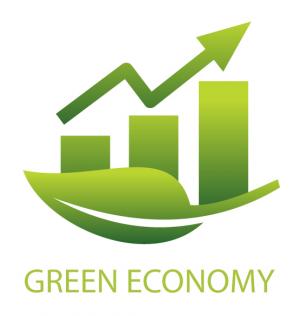Mexico City Bus Rapid Transit
Description
Source: World Resources Institute (2011) A Compilation of Green Economy Policies, Programs, and Initiatives from Around the World. The Green Economy in Practice: Interactive Workshop 1, February 11th, 2011
In 2005, Mexico City opened Metrobus, a BRT corridor along one of the city's busiest streets. Metrobus replaced about 350 standard buses with 97 new articulated BRT vehicles. Some of the BRT vehicle are owned by a private company, CISA, and some are owned by a public company, RTP. Vehicles have a maximum capacity of 160 passengers and run at extremely high frequencies, roughly 56 per peak hour along the northern half of the route. Currently, the BRT is carrying roughly 250,000 passengers per day. There is a trust fund that manages, invests, and distributes all fare revenues. The trust fund contracts directly with a fare collection contractor which, among other things, provides fare collection equipment, sells smartcards, collects the cash, and deposits the cash with the trust fund. Given the program's success, the new Mayor of Mexico City, Marcelo Ebrard, is actively considering building 10 more Metrobus corridors.
Mexico City Government supported the planning, coordination, rectory and management as well as the financing of the construction and maintenance of the corridor infrastructure.RTP and CISA formed a private trust that is responsible for the administration and distribution of total revenues from Metrobus. A private company was hired to finance, provide and operate the technology platform for the use of a smart card for toll collection.
The benefits of the BRT are as follows:
- Reduced commute time from 1.5 hours to 1 hour for the route;
- Reduced passenger exposure to CO, benzene, and PM 2.5 by up to 50 percent, as compared with previous bus service in the corridor;
- Reduction of CO2 by 35,000 tons annually;
- Increased market opportunities for rapid transit buslines.
SDGS & Targets
Goal 8
Promote sustained, inclusive and sustainable economic growth, full and productive employment and decent work for all
8.1
8.1.1
Annual growth rate of real GDP per capita
8.2
Achieve higher levels of economic productivity through diversification, technological upgrading and innovation, including through a focus on high-value added and labour-intensive sectors
8.2.1
Annual growth rate of real GDP per employed person
8.3
Promote development-oriented policies that support productive activities, decent job creation, entrepreneurship, creativity and innovation, and encourage the formalization and growth of micro-, small- and medium-sized enterprises, including through access to financial services
8.3.1
Proportion of informal employment in total employment, by sector and sex
8.4
Improve progressively, through 2030, global resource efficiency in consumption and production and endeavour to decouple economic growth from environmental degradation, in accordance with the 10-Year Framework of Programmes on Sustainable Consumption and Production, with developed countries taking the lead
8.4.1
Material footprint, material footprint per capita, and material footprint per GDP
8.4.2
Domestic material consumption, domestic material consumption per capita, and domestic material consumption per GDP
8.5
8.5.1
Average hourly earnings of female and male employees, by occupation, age and persons with disabilities
8.5.2
Unemployment rate, by sex, age and persons with disabilities
8.6
8.6.1
Proportion of youth (aged 15-24 years) not in education, employment or training
8.7
Take immediate and effective measures to eradicate forced labour, end modern slavery and human trafficking and secure the prohibition and elimination of the worst forms of child labour, including recruitment and use of child soldiers, and by 2025 end child labour in all its forms
8.7.1
Proportion and number of children aged 5‑17 years engaged in child labour, by sex and age
8.8
Protect labour rights and promote safe and secure working environments for all workers, including migrant workers, in particular women migrants, and those in precarious employment
8.8.1
Fatal and non-fatal occupational injuries per 100,000 workers, by sex and migrant status
8.8.2
Level of national compliance with labour rights (freedom of association and collective bargaining) based on International Labour Organization (ILO) textual sources and national legislation, by sex and migrant status
8.9
By 2030, devise and implement policies to promote sustainable tourism that creates jobs and promotes local culture and products
8.9.1
Tourism direct GDP as a proportion of total GDP and in growth rate
8.10
Strengthen the capacity of domestic financial institutions to encourage and expand access to banking, insurance and financial services for all
8.10.1
(a) Number of commercial bank branches per 100,000 adults and (b) number of automated teller machines (ATMs) per 100,000 adults
8.10.2
Proportion of adults (15 years and older) with an account at a bank or other financial institution or with a mobile-money-service provider
8.a
8.a.1
Aid for Trade commitments and disbursements
8.b
By 2020, develop and operationalize a global strategy for youth employment and implement the Global Jobs Pact of the International Labour Organization
8.b.1
Existence of a developed and operationalized national strategy for youth employment, as a distinct strategy or as part of a national employment strategy
SDG 14 targets covered
Deliverables & Timeline
Resources mobilized
Partnership Progress
Feedback
Action Network


